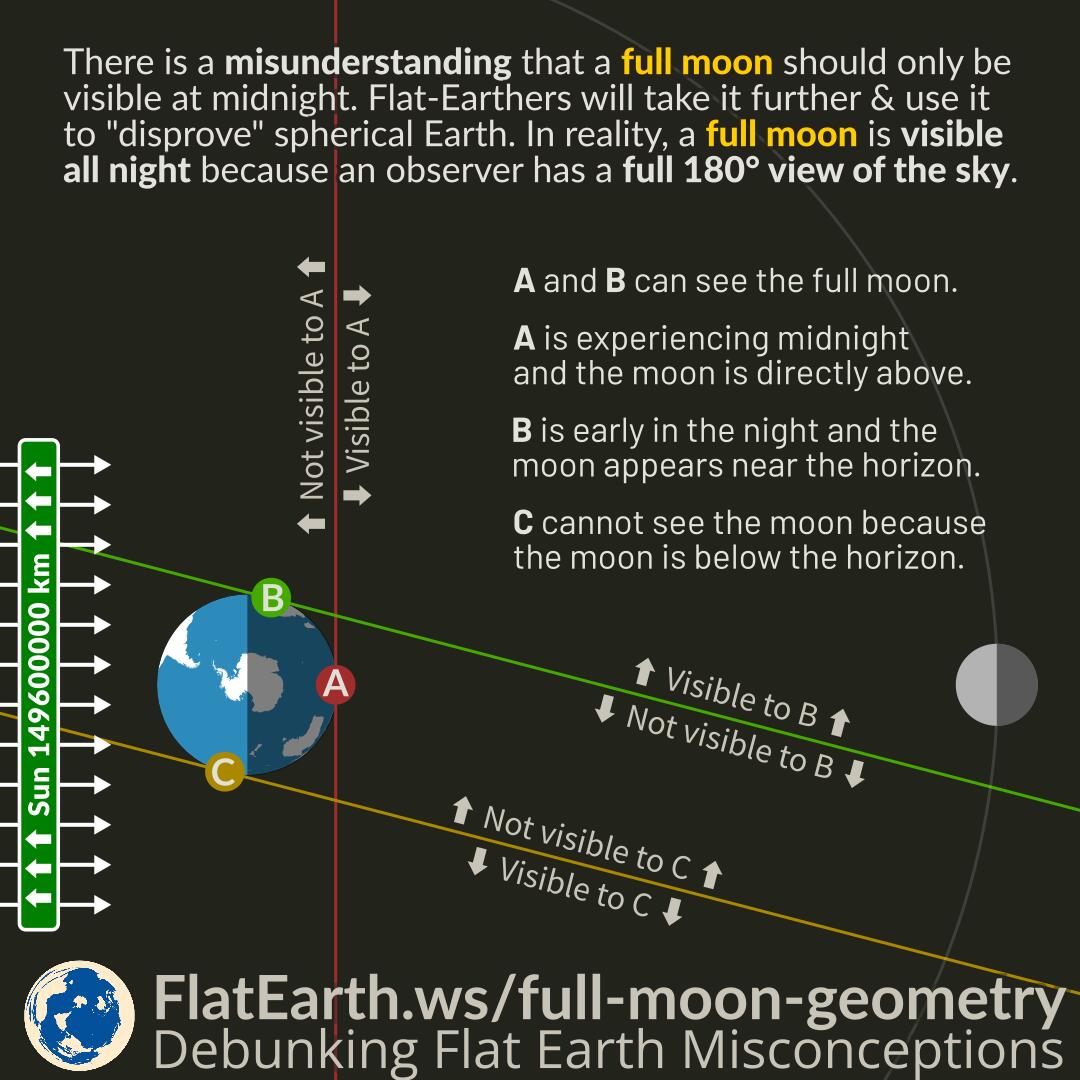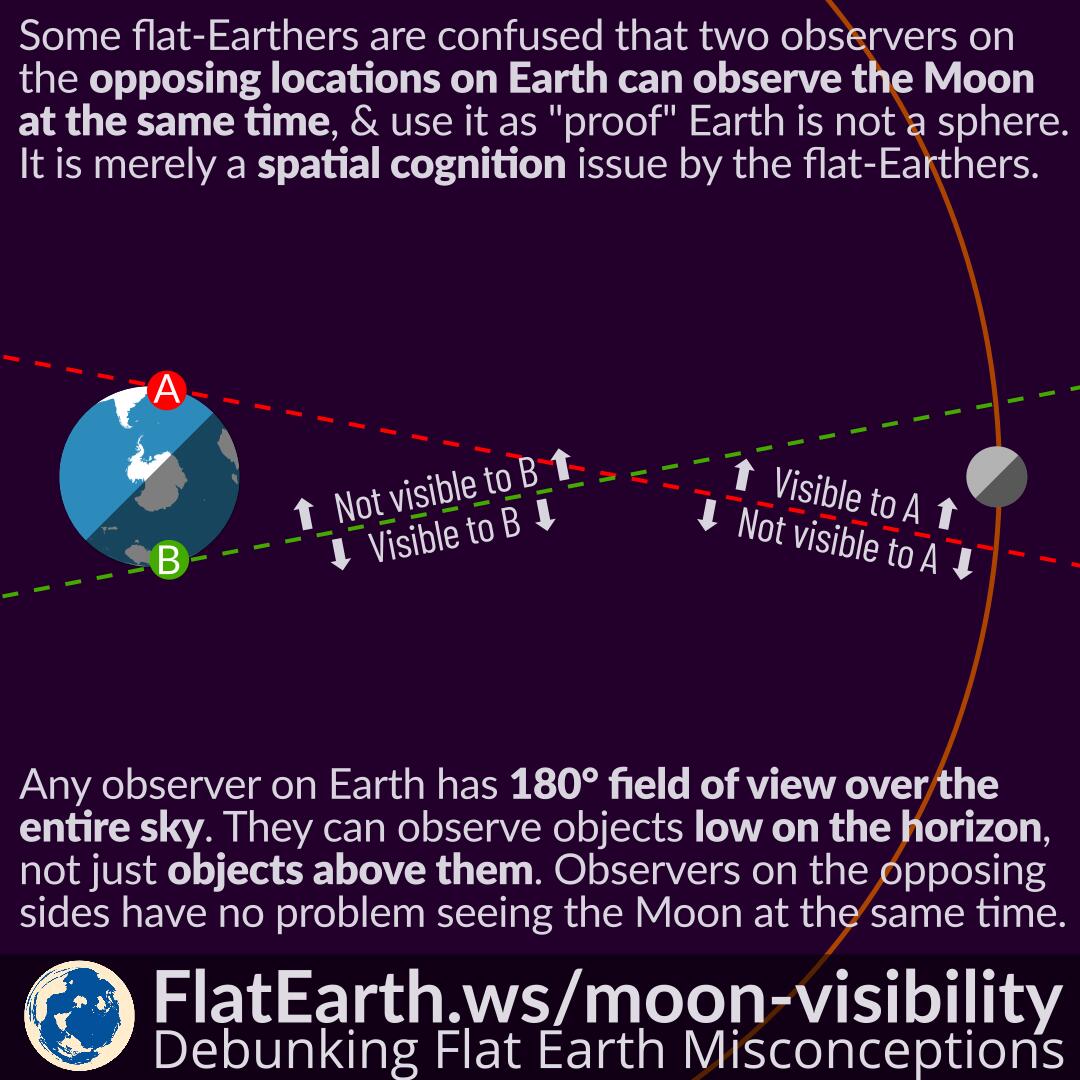Some people are confused that we can see a full moon all night. They expect if the full moon is the result of the opposition of the moon from the sun, then a full moon should be visible only at midnight.
Flat-Earthers with such a spatial cognition problem go a step further and use it to “disprove” spherical Earth. In reality, we can easily explain the phenomenon in the spherical Earth model.




